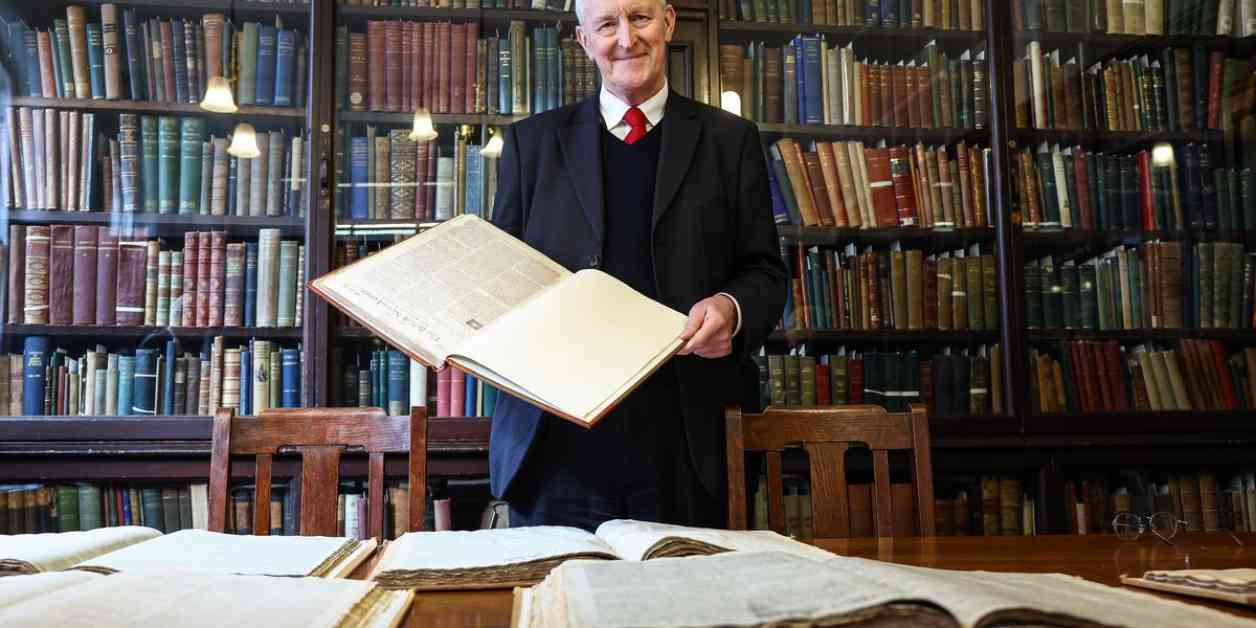In an exciting development for history buffs and enthusiasts of the written word, the Government has announced plans to digitize historic editions of the world’s oldest English language daily newspaper still in circulation. The News Letter, which first rolled off the presses in September 1737, is gearing up to celebrate its remarkable 288th anniversary. This initiative, a collaborative effort between the Northern Ireland Office, the British Library, and FindMyPast, aims to expand the online collection of this venerable publication housed within the British Newspaper Archive.
The digitization project will open up a treasure trove of copies dating from the 18th to the 20th centuries, making them accessible online for the very first time. The News Letter’s distinction as the longest continuously published English language daily newspaper holds a special place in Northern Ireland’s rich cultural tapestry. This move underscores the UK Government’s commitment to preserving and promoting the historical archives that form an integral part of Northern Ireland’s heritage.
As part of the digitization process, the British Library is providing originals of the News Letter in microfilm and newspaper format to be scanned and uploaded by Findmypast, a platform that has dedicated nearly 15 years to digitizing the British Library’s extensive newspaper collection. Secretary of State Hilary Benn recently paid a visit to Belfast’s Linen Hall Library to peruse the historic copies of the News Letter and underscored the significance of this initiative in safeguarding Northern Ireland’s unique cultural legacy.
In a statement, Mr. Benn emphasized the importance of digitizing these historical archives to showcase Northern Ireland’s traditions worldwide, particularly in nations with deep-rooted historical connections like the United States. This digital transformation will not only ensure the preservation of these invaluable records but also make them easily accessible to future generations.
Sarah Bush, managing director of Findmypast and the British Newspaper Archive, expressed delight at the prospect of offering this culturally significant title for public perusal. She noted that the digitized News Letter would provide a captivating glimpse into centuries of Northern Ireland’s history, chronicling events as they unfolded. Beth Gaskell, lead curator of news and moving image at the British Library, echoed this sentiment, highlighting the collaborative effort to enhance the existing collection of the News Letter available through the British Newspaper Archive.
David Montgomery, executive chairman of National World plc, the owners of the News Letter, underscored the publication’s enduring legacy in the realm of local and global news and opinion. He emphasized the crucial role that reliable independent journalism plays in shaping public discourse and noted that the digital archive would serve as a perpetual reminder of this vital function.
The digitization process, set to be completed this spring, will see Findmypast employing specialist microfilm scanners to digitize pages of the Belfast News Letter at the British Library’s facility in Boston Spa. These state-of-the-art scanners can process thousands of newspaper pages daily, ensuring the faithful reproduction of the original newspaper format. Once online, individuals can access these editions free of charge through libraries with a subscription to Findmypast, including the British Library’s locations in St Pancras, London, and Boston Spa, Yorkshire. Additionally, individuals worldwide with a subscription to the Findmypast or British Newspaper Archive websites will have access to this rich archival content.
As this ambitious digitization project moves forward, it promises to unlock a wealth of historical insights and narratives, offering readers a unique opportunity to delve into the annals of Northern Ireland’s past through the lens of its oldest English language daily newspaper. The fusion of tradition with technology underscores a commitment to preserving history while making it widely accessible in the digital age. Stay tuned for updates as this exciting initiative unfolds, illuminating the past for present-day audiences and generations yet to come.














